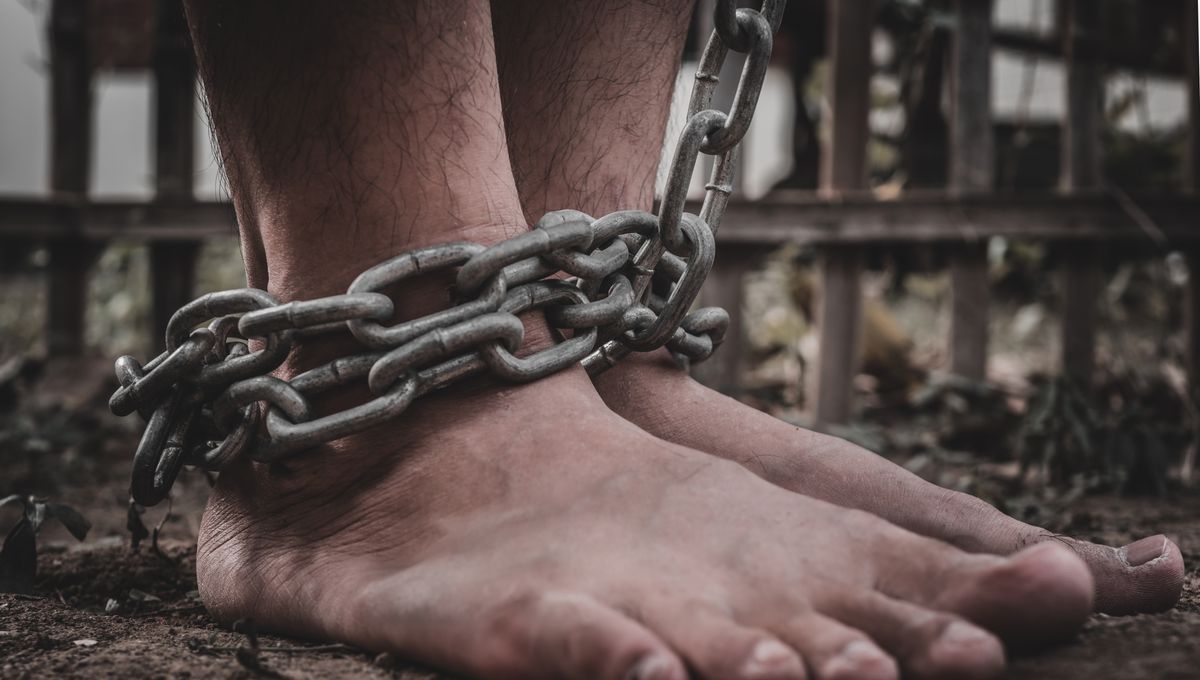
The ancient Egyptians sure loved gold, and it seems they saw human suffering as a small price to pay for the precious metal. New discoveries at a 2,300-year-old gold mine reveal that some workers may have been forced to extract the material with heavy iron shackles around their ankles, highlighting the cruelty and callousness upon which the Egyptian empire was built.
ADVERTISEMENT
Describing the disturbing discovery in a new study, historian and archaeologist Bérangère Redon explains that gold mining experienced a boom during the Ptolemaic period, which began following Alexander the Great’s Conquest of Egypt in 332 BCE. The longest and final dynasty of ancient Egypt, the era opened with the rule of Ptolemy I – a trusted general of Alexander – and saw more than 40 new mines established throughout the kingdom.
“The new dynasty founded by Ptolemy I needed gold to fund military campaigns in the Mediterranean, prestige projects abroad and monumental buildings in Alexandria, reflecting its power and wealth,” writes Redon.
The northernmost gold mine from this period was located at Ghozza and operated during the second half of the third century BCE. Hundreds of pottery shards called ostraca have been found at the site, some of which are inscribed with information about miners receiving wages.
Moreover, a lack of guarded buildings in the workers’ village at Ghozza suggests that many of those who toiled in the mine were probably free laborers rather than slaves.
However, in January 2023, two sets of iron shackles were discovered in the village, painting a rather less progressive picture. The first of these consists of seven foot-rings along with two chain links, while the second features four links and fragments from two rings.
“These shackles were not meant for restraining animals, as rope ties were typically used for that purpose,” writes Redon. “Instead, they were designed for human use,” she continues, adding that “walking with them would have been slow and exhausting, particularly given their weight.”
ADVERTISEMENT
As horrible as this sounds, it’s not particularly surprising to learn that the ancient Egyptians made use of forced labor in their gold mines. Historical texts penned by the second century BCE writer Agatharchides, for instance, reveal that “those who have been condemned in this way – and they are of a great multitude and all have their feet bound – work at their tasks unceasingly both by day and throughout the entire night.”
So while some of Ghozza’s miners do appear to have been free workers, the reality for many of those who provided the Ptolemies with their precious gold was far less pleasant.
“Beneath the grandeur of Egypt’s wealth and the imposing mountains of the Eastern Desert lies a history of exploitation,” writes Redon. “The gold extracted from these mines helped finance the ambitions of Egypt’s rulers, but it came at a significant human cost.”
The study is published in the journal Antiquity.
Source Link: Iron Shackles At Ancient Egyptian Gold Mine Reveal Brutal Working Conditions